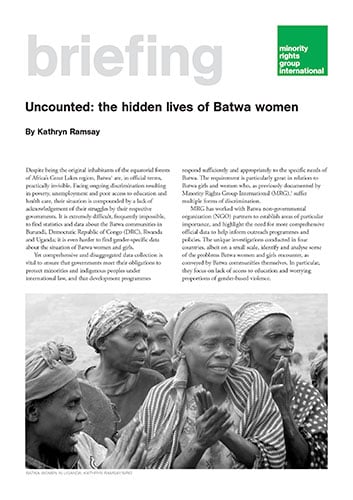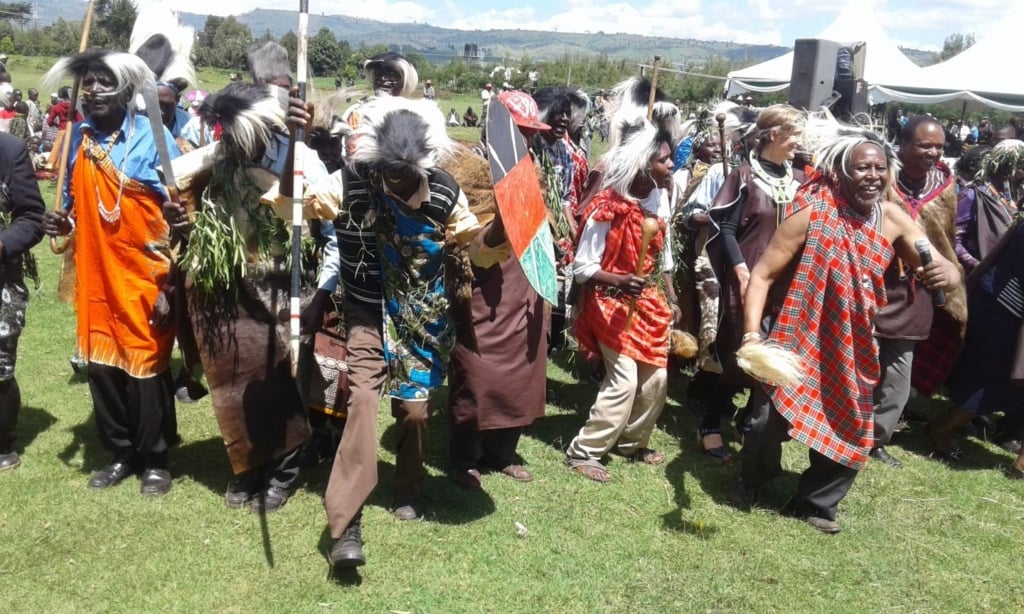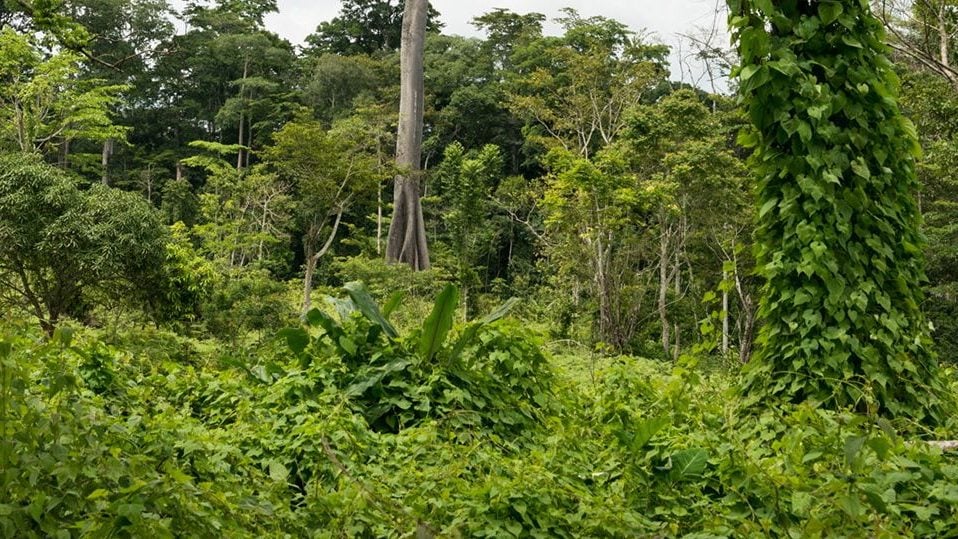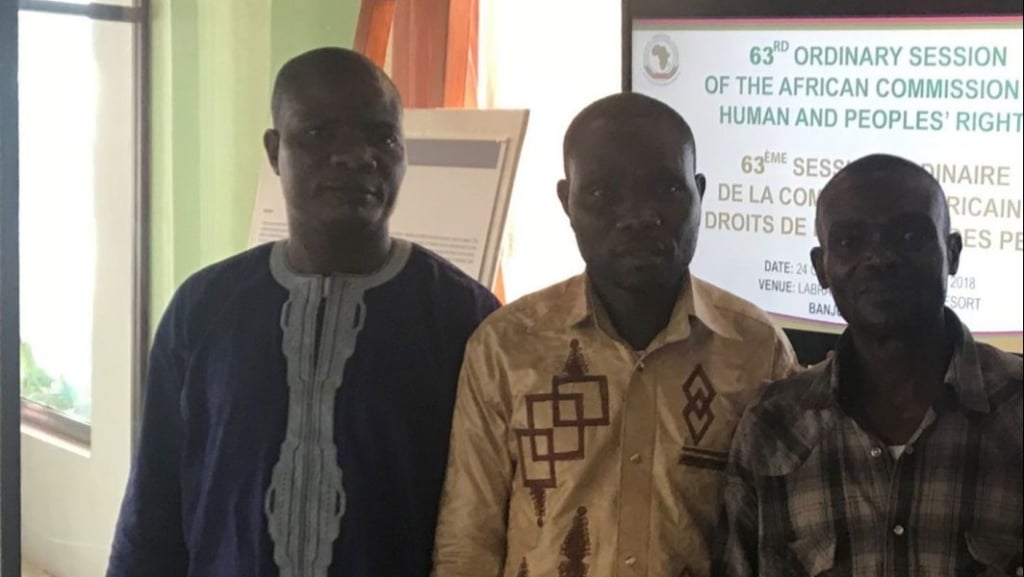Democratic Republic of the Congo
-
Main minorities and indigenous peoples: The hundreds of ethno-linguistic groups include Kasaians, Banyarwanda, Hunde, Nyanga, Nande, Bangala, Batwa and Bambuti (Adequate statistics are unavailable).
Main languages: French (official), Lingala, Kikongo, Tshiluba, Swahili
Main religions: Christianity (mainly Roman Catholicism but also burgeoning evangelical Protestantism in urban areas); Kimbanguinism, a highly personalized neo-Christian belief system prevalent in the south west; traditional magico-religious systems; and Islam. Overlaps between one or more of these practices are commonplace.
The hundreds of ethno-linguistic groups include Kasaians, Banyarwanda, Hunde, Nyanga, Nande, Bangala, Batwa and Bambuti (Adequate statistics are unavailable).
For a country with a population of around 80 million, variously assessed as having 250 ethnic groups and up to 700 languages and dialects, definitions of minorities are complex even by the standards of the region. Ethnicity, while a powerful mobilizing force in politics, has been a particularly fluid and changeable category, linguistic and regional agglomerations being overlaid with factors of religion, class and education. Nor are the most vulnerable minorities and indigenous peoples necessarily the smallest or most marginalized.
-
In the Democratic Republic of Congo (DRC), over three decades of neglect and abuse under former dictator Mobutu Sese Seko left a weak state geared towards predation and extraction of profit from the nation’s prodigious natural wealth rather than care of its citizens. The current situation has been shaped to a large extent by events in the Great Lakes: after the Rwandan genocide in 1994, Hutu extremist perpetrators were among hundreds of thousands of Hutu refugees who fled to eastern DRC to escape the advance of the Uganda-based Tutsi force which assumed power in Rwanda. Hutu extremists carried on attacking Tutsis in the region from bases in the DRC, and in 1997 Rwanda invaded the DRC to dislodge them. Other neighbouring countries joined the conflict, driven in part by the prospect of profit from the region’s mineral resources. What followed was ‘Africa’s World War’, lasting over a decade and ultimately involving nine African nations.
With up to 250 ethnic groups and a tradition of clientelism, political manipulation of ethnicity to maintain the balance of power was a common, if complex, phenomenon. Many of the armed groups in eastern DRC are allied with specific ethnic groups, giving an inter-ethnic dimension to their conflict with the DRC army and with each other. They have reportedly committed serious abuses of human rights and violations of international humanitarian law; and are reported to target people whom they suspect, due to their ethnicity, of supporting their opponents.
In recent years the DRC has seen ongoing conflict between armed groups, some of them local and some formed with the backing of other countries, despite the presence from 2000 of a succession of UN peacekeeping missions. With well over 100 armed groups regularly attacking one another, government forces supported by UN troops, and civilians. Ituri and North Kivu have been the worst affected as of late, and while rebels have been responsible for the majority of civilian deaths, including several brutal massacres by the Allied Democratic Forces, an ISIS-linked group, government soldiers have also committed widespread abuses. In May 2021, the central government imposed martial law in Ituri and North Kivu, with the number of displaced people in both provinces reaching more than 3.5 million people by August. Critics warn that martial law has been used to drastically narrow basic freedoms of expression and association, adding to the broader repressive measures President Félix Tshisekedi has taken to consolidate power over rivals since 2020.
By the beginning of 2022, more than 1 million DRC citizens were living as refugees outside the country, including 460,000 in Uganda alone, while an estimated 5.5 million were internally displaced. A significant number of the latter have been displaced repeatedly and often for protracted periods due to cyclic violence, including ethnic violence, in the region over nearly two decades. In areas such as Masisi, North Kivu, these struggles have at times led to Banyarwanda people of Rwandan ancestry (both Hutu and Tutsi), perceived as ‘foreign’ by some, being targeted by militias from groups claiming a longer history in the local area. In eastern DRC grave abuses of human rights and humanitarian law – including ethnically motivated attacks on civilians – have continued.
Many communities in conflict-affected areas have been forced to relocate to cities such as Goma, where they have ended up in a state of protracted displacement in overcrowded settlements on the urban periphery. Residents in these areas typically struggle with limited basic services such as water or sanitation, chronic economic insecurity and an elevated risk of violence or sexual assault by armed militias. As many of those who wish to return are often unable to do so because their land has been forcibly seized, effectively leaving them in a state of indefinite displacement, the situation of displaced populations in Goma and other urban centres in conflict-affected regions of DRC may therefore represent a long-term challenge that will need to be addressed through effective and integrated urban policies to ensure their protection and prevent regular outbreaks of violence.
-
Environment
Democratic Republic of the Congo (DRC) is a vast country of great geographical diversity. It borders Angola and Zambia in the south, Tanzania, Burundi, Rwanda and Uganda in the east, Sudan and the Central African Republic in the north, and the Republic of Congo (Congo-Brazzaville) in the west. The country takes its name from the Congo River, at the mouth of which the DRC has a tiny but strategic Atlantic coastline. A string of lakes, including Lake Tanganyika, line the DRC’s eastern border. These have provided the topography for arguably the world’s most destructive irregular warfare in recent generations. Most of the country has a tropical climate and vegetation; grasslands in the north, mountains in the east, and drier plateaus in the south are the exceptions. The DRC has immense mineral wealth, including copper, gold, diamonds, coltan, cobalt and manganese, but these resources have proved a curse rather than a blessing.
History
From early times densely forested areas have been home to indigenous, traditionally hunter-gatherer communities including Batwa of the eastern borders through to Baka groupings on the border with Congo-Brazzaville and the Central African Republic. On the forest fringes and rivers, agricultural and fishing communities showed much greater social and economic differentiation. By the fifteenth century powerful kingdoms had developed in the south and west of the country. The largest of these was the Kingdom of Kongo, which extended in all directions from the mouth of the Congo River. Portuguese explorers arrived towards the end of the 15th century, followed by missionaries. Slave traders arrived soon after, leading to a considerable expansion and internationalisation of the practice, which had previously been applied by the Kingdom of Kongo in local wars of conquest. The European connection accelerated slave raids and contributed to a significant depopulation of the continent’s interior.
In 1881 King Leopold II of Belgium organized a unique variety of colonialism in what is now Democratic Republic of Congo (DRC), vesting himself with sole ownership of the entire territory and following such brutal and exploitative policies as to cause, even then, an international outcry. Congolese were enslaved en masse to collect rubber, ivory and other resources for the Belgian king and his concessionaries; communities that failed to produce faced brutal collective punishment, including the amputation of hands and execution. Leopold’s hellish ‘Congo Free State’ regime is thought to have caused the deaths of 10 million Congolese – and perhaps as many as three times that number. From 1908, in response to the first sustained international human rights campaign, the territory was taken out of Leopold’s personal possession and became a regular colony of the Belgian state, called the Belgian Congo.
Change only came slowly, and forced labour continued, even if formally banned. Belgian rule relied heavily on customary local authorities, though this often involved the disruption of pre-existing political relations, the creation and manipulation of chieftainships, and the entrenchment of ethnic divisions. This process was also reinforced by an educational system, implemented mainly by the Catholic Church and confined almost entirely to primary level, which favoured certain regions, additionally serving to formalize linguistic divisions. From the 1920s resistance was primarily expressed through messianic movements, notably Kimbanguists and Jehovah’s Witnesses, whose supporters faced persecution before and after independence. The latter group in particular remain controversial in the political centre, Kinshasa (formally Léopoldville).
Pro-independence sentiment steadily gained ground through the 1940s and 1950s. Congolese chafed ever more at white privilege and colonial constraints, and in January 1959 massive rioting shook the capital, Léopoldville (now Kinshasa). A deep divide within the independence movement pitted advocates of federalism against advocates of a unitary state. Federalists claimed that with the country’s size and diversity, it would be impossible to insist on unity in the short-term; ‘unitarists’, who took inspiration from pan-Africanism, argued that federalists were really separatists, and suspected that it was no coincidence that advocates of federalism tended to come from richer provinces, especially mineral-rich Katanga.
Belgian opposition to the radical unitarist nationalism of Patrice Lumumba’s Mouvement National Congolais (MNC) encouraged the escalation of regional and ethnically based parties during the hectic transition to independence. At Congolese independence in June 1960, federalist Joseph Kasavubu became president, and Lumumba became prime minister. Immediately the southern province of Katanga, which has had strong economic links to neighbouring Zambia for centuries, declared independence. A prolonged period of chaos and civil war followed, in which regional and ethnic factors came to the fore. Lumumba was arrested at the end of 1960 and executed two months later, with the connivance of Belgian and American secret service operatives: at the height of the Cold War, Washington in particular disfavoured Lumumba’s socialism. UN forces were dispatched to Katanga, and in 1963 Katangan leader Moise Tschombe revoked the province’s secession; President Kasavubu appointed him prime minister the following year.
In 1965 western-backed General Joseph-Desiré Mobutu came to power through a coup. Despite the continuation of insurrectionary movements in Katanga and in the north-eastern province of Orientale, Mobutu at first achieved comparative stability by the ruthless suppression of opposition and by increasing the concentration of power in presidential hands. In 1971 he took the name Mobutu Sese Seko Kuku Ngbendu Wa Za Banga (‘The all-powerful warrior who, because of his endurance and inflexible will to win, goes from conquest to conquest, leaving fire in his wake and arising from the blood and ashes of his enemies like the sun which conquers the night’). He also renamed the country ‘Zaire’ as part of a campaign of African authenticity. Mobutu extended the legacy of Leopold and Belgium, not so much governing Zaire, but plundering it for his own wealth and power, while servicing the parallel networks of patronage and reward that constituted his own conception of African political economy.
Zaire’s costly defeat alongside the United States and South Africa in Angola in 1975 combined with economic collapse tied to falling copper prices and disastrous economic policies to provoke a succession of army mutinies. Renewed rebellion broke out in Shaba (Mobutu’s name for Katanga), which was only suppressed with the help of Moroccan and later French and Belgian troops, helped by considerable numbers of informally recruited French and other mercenaries. Increasingly Mobutu moved members of his own Ngbandi and related groups – Lingala speakers from Equateur province – into positions of power, particularly within the elaborate security apparatus. A decade after his overthrow, many of these individuals, often operating with great economic independence, remain influential within the ‘shadow economy’ of Congolese power politics.
Instability, indebtedness and economic decline, combined with gross corruption and pervasive human rights violations, continued through the 1980s without threatening the support from Mobutu’s external backers until the end of the decade and the end of the Cold War. External pressure led to the formal establishment of multiparty politics in 1990, but the political parties that emerged – some 230 of them – were little more than kinship corporations, vying to control elements of Mobutu’s decaying patronage apparatus. Increasing popular discontent exploded into widespread rioting in many cities in 1991, following army massacres of students (the actual scale of which is contested by some) in Lubumbashi and of demonstrators in Kinshasa. In 1992 Mobutu launched a pogrom against the Kasai in Shaba (Katanga) province, but it became increasingly clear that his grip on power was slipping: the Kasaian episode itself was rapidly co-opted by Mobutu-appointed regional governors for their own ends of power, prestige and access to resources. The same year, a long-postponed all-party Sovereign National Conference, with transition to democracy on its agenda, elected Étienne Tshisekedi as prime minister.
This precipitated a crisis with the military and with Mobutu, who refused to ratify the appointment and the provisional Constitution. In 1993 the country had rival governments and rival prime ministers. One response of pro-Mobutu factions was to play the ‘ethnic card’ with a vengeance, precipitating further anti-Kasaian riots and mass expulsions – apparently following a strategy equating democracy with instability and ethnic hatred, as a justification for blocking reform and maintaining Mobutu in power. Mobutu’s control of the central bank and other sources of finance, combined with rivalries among Tshisekedi’s supporters, enabled him to gain the upper hand in 1994. A period of hyperinflation outstripping anything yet seen in Africa ensued, accompanied by the dollarisation of the economy in urban areas, and the reversion to a combination of forced self-sufficiency and anarchic pillage in rural zones. What was left of the transportation and communications networks outside Kinshasa’s inner suburbs fell apart.
Following the 1994 genocide in neighbouring Rwanda, many Hutu extremist perpetrators joined hundreds of thousands of Hutu refugees who feared retribution in eastern Zaire. From there, the militants, with the support of Mobutu, launched attacks on the new Rwandan government, as well as on Congolese Tutsi, the Banyamulenge. In 1996 Rwanda and Uganda sent their own forces into eastern Zaire. They deployed the veteran Lumumbist rebel Laurent Kabila, an associate of the Cuban revolutionary Che Guevara, in a westward sweep toward Kinshasa, backed largely by Swahiliphone armed forces often only nominally under his control. In the process, Rwandan government forces and Kabila’s forces killed thousands of Hutus: combatants and non-combatants alike. Meanwhile, in 1996, 50,000 marched in Kinshasa to protest Mobutu’s continued rule, one month before the announcement that the dictator had prostate cancer. In early 1997, South African President Nelson Mandela and an American envoy hosted a meeting between Mobutu and Kabila, and urged Mobutu to step down. He finally fled the country as Kabila and his allies took Kinshasa in May 1997. The predicted massacre of the capital’s inhabitants did not take place. Even before Kabila’s forces had reached the capital, though, new contracts had been signed between Kabila and American mining companies for exploitation of copper and other resources. The fallout – legal, economic, and military – continues to the present.
Kabila renamed the country the Democratic Republic of Congo. However, he quickly fell out with Rwanda and Uganda, and in 1998 these countries sponsored rebel movements to invade the DRC anew. The rebels also had the support of the then Tutsi-dominated Burundian securocracy, while the Kabila government had that of Angola, Zimbabwe and Namibia, at least two of which were ambitious to expand their economic footprint in the DRC’s potentially huge resources of exploitable minerals. Seven nations were now directly involved, and because their various roles were often rewarded in natural resource concessions, they had little incentive to withdraw. Other countries, from Chad to Ukraine, were involved through the supply of armaments, personnel, banking and money laundering facilities. Media circles began referring to the DRC crisis as ‘Africa’s First World War’. Fighting continued despite a July 1999 ceasefire agreement and deployment of a UN peacekeeping mission (MONUC) in 2000 that was understaffed and had a weak mandate. A study by the International Rescue Committee found that between 1998 and 2004, nearly four million people in the DRC – the equivalent of the entire population of Ireland – died as a result of the war.
Through a combination of neo-Maoist ideology, stubborn Congolese nationalism, and lack of easily mobilized personnel and resources, Laurent Kabila never managed fully to impose order upon the Kinshasa region, let alone the rest of the country and its relations with the outside world. He rapidly lost friends around the globe.
Kabila was assassinated in January 2001 by one of his own Swahili-speaking bodyguards of eastern-DRC origin – although who coordinated the killing remains unknown. His son Joseph Kabila assumed the presidency amid frequent accusations among Kinshasa opposition circles that he is a Rwandan adoptee or even an impostor. Under international pressure in 2002, he entered into a power-sharing government with rebel factions and civil society in July 2003.
Like his father, Joseph Kabila’s reach barely extended beyond Kinshasa; a vacuum of power persisted in most of the country, especially the east, and was filled by various and competing militia factions, as well as destitute army units who paid themselves by stealing and terrorizing local populations. Joseph Kabila’s hold on power was particularly tenuous because he was raised in the Swahili-speaking Katanga province and Tanzania, and his command of Lingala, spoken in Kinshasa and elsewhere in the west, is not fluent. In one example, violence in north-eastern Ituri province flared despite improved security in Kinshasa. Tensions between Hema and Lendu peoples, incited during colonial times and the Mobutu era, had destabilized the province; as the power-sharing government was taking shape in 2002–3, clashes between heavily armed Hema and Lendu militias and massacres of civilians resulted in at least 50,000 deaths and sparked EU intervention. French-led EU peacekeepers intervened in 2003 to quell the violence in and around Ituri’s capital Bunia, and in July 2003 and October 2004 the UN Security Council bolstered MONUC to a nearly 17,000-strong force and gave it a new mandate to protect civilians ‘under imminent threat of violence’. Despite a demobilization programme, extended in July 2006, there were reports in September 2006 that splintered Hema and Lendu militias were rearming and engaging in new clashes.
Meanwhile, the National Assembly adopted a new Constitution in May 2005. The document limited the president to a maximum of two five-year terms, decentralized some powers, and generally weakened the executive in favour of the legislative branch. During the war, hatred had been stirred up against the Banyamulenge people in particular through demagogic accusations that the group was ‘foreign’ (more specifically, Rwandan); the new Constitution defined as citizens every ethnic group that had been present at independence in 1960, a definition that includes the Banyamulenge.
In 2006, the first free elections for 40 years were won by the incumbent Joseph Kabila with an estimated 58 per cent of the vote, mostly from the Swahili-speaking east, creating concern about his ability to overcome the divide with the Lingala-speaking west. Over 30 presidential candidates emerged during 2006 in a campaign marred by incitement to ethnic hatred. In May 2006 one of DRC’s four vice-presidents engaged in anti-Tutsi rhetoric at a campaign rally for Joseph Kabila in the North Kivu town of Goma. Another vice-president, and Kabila’s main rival for the presidency, Jean-Pierre Bemba, was a leading Ugandan-backed warlord in north-eastern Congo prior to entering the government in 2003 (he was subsequently charged with war crimes by the International Criminal Court in 2008 and was convicted in 2016 for war crimes and sexual violence). He based much of his campaign on xenophobic rhetoric aimed at casting doubt on Kabila’s Congolese identity. When results were announced on 20 August 2006, Kabila had 45 per cent to Bemba’s 20 per cent, requiring a run-off. The announcement sparked three days of violence between their supporters in Kinshasa that killed at least 23 people and required intervention by UN and EU peacekeepers. The run-off election was held on 29 October and, despite violence in part of Ituri province, international observers deemed the voting to be largely free and fair. Despite initial court challenges, Bemba signalled he would accept the result.
Armed groups such as the Hutu-dominated FDLR committed ongoing abuses in eastern DRC, as did the DRC army and other armed groups (such as the CNDP and later, the M23) fighting them. Meanwhile, other conflicts continued in parallel. The elusive Lord’s Resistance Army (LRA), an insurgency group that originated in northern Uganda in the 1980s, attacked dozens of villages and towns, mostly between December 2008 and January 2009, in the far north-east. Around 1,100 civilians were killed, hundreds abducted and close to 200,000 displaced, according to the head of MONUC. Between January and April 2010, the LRA reportedly killed at least 96 civilians around the town of Niangara, Orientale province, and abducted dozens more, in spite of the presence of UN peacekeepers there. The LRA was also accused of forcibly recruiting civilians, particularly children, as porters, cooks and combatants, and of widespread mutilation and sexual violence against women and girls, including during revenge attacks on communities it perceives as supporting the state. By May 2010, the UN reported that the LRA had killed almost 2,000 people in Orientale province since December 2007. For their part, government soldiers have also been accused of serious violations against civilians, including unlawful killings and rape. In April 2017 the African Union Regional Taskforce ended its manhunt for notorious LRA leader Joseph Kony after a six-year search mission in the region.
By 2010, an estimated 2 million people were internally displaced in the DRC, 1.4 million of them from North and South Kivu. Human rights abuses, including unlawful killings, torture, recruitment of children and sexual violence, were widespread in conflict areas and indigenous communities, including Batwa or Bambuti, were particularly vulnerable to attack. Abuses were at times be fuelled, at least in part, by ethnic identity, as armed groups targeted communities or groups suspected of supporting opposing forces. Analysts believed that the widespread use of rape, inflicted by all sides and affecting all ethnic groups, had led to the ‘normalization’ of rape even among the civilian population and has resulted in greater levels of sexual violence generally; one particularly egregious case involved mass rapes committed by rebel fighters against villagers in Walikale district, North Kivu, in 2010. All told they raped or gang-raped over 300 people, including women, men, girls and boys. Local residents, most of whom belong to the Nianga ethnic group, told UN investigators that their communities had been targeted as punishment for suspected pro-government sympathies. They said that they believed rape was deliberately chosen as a weapon because of the stigma traditionally attached to it in their culture. In Equateur province the same year, over 100,000 refugees reportedly fled across the Ubangui River to the Republic of Congo as a result of what began as an inter-ethnic clash between the Enyele and Munzaya tribes over fishing rights, with tens of thousands internally displaced.
In South Kivu, armed groups, as well as the army itself, continued to attack civilians and aid workers. Impunity contributed to all types of violence against civilians, including incidents of sexual violence affecting both women and men of diverse ethnic groups. Despite the convictions in court of eight FARDC soldiers and their commanding officer for mass rapes carried out in Fizi on 1 January 2011, soldiers defecting from the same army unit in June carried out another series of mass rapes in nearby villages. Meanwhile, attacks on civilians across ethnic groups by the LRA intensified in the north-eastern Orientale province in the first half of 2011, with tens of thousands displaced; and FARDC soldiers in the area were accused of violations, including against the Mbororo, semi-nomadic Islamic pastoralists. The year 2012 saw another upsurge in fighting in eastern DRC, and in November the UN reported an increase to 2.24 million internally displaced people, with an additional 70,000 people having fled into Rwanda or Uganda.
Flawed presidential elections in November 2011 led to the re-inauguration of incumbent Joseph Kabila. Electoral violence, ranging from widespread violations by state security forces against opposition candidates and activists, to violence between supporters of different political parties, began early in the year. It carried on through the presidential and parliamentary campaign to polling day and subsequent conflict over results. Targeted killings and ‘disappearances’ of candidates and supporters were reported, as well as shootings and arrests of demonstrators. Journalists and human rights defenders were attacked, detained or threatened. At times, candidates or their supporters used apparent ethnic hate speech to incite violence against opponents, despite an agreed code of conduct for political parties. Opposition sympathizers and leaders, such as Kabila’s rival for the presidency Étienne Tshisekedi, a Kasaian of Luba origin, were reported to be the most frequent targets.
In December 2013, DRC troops reportedly killed dozens of armed youths who attacked official buildings in Kinshasa, reportedly out of anger at what they claimed were President Kabila’s overly close ties to Rwanda. The mainly Hutu FDLR continued to be accused of ethnically oriented violence and other abuses. in October 2013 authorities and UN representatives suggested that it was, and the Ugandan-led Islamist armed group Allied Democratic Forces-NALU (ADF-NALU), would be the army’s new focus.
ADF-NALU, formed with the aim of creating an Islamic state in Uganda, had been reportedly pushed across the border into the DRC in 1995 where it formed local ties. A UN/ DRC military operation in January 2014 in the Beni region of North Kivu against ADF-NALU caused mass civilian displacement, and in the last quarter of the year, ADF-NALU was believed to have been responsible for a series of brutal attacks in Beni in which more than 250 civilians were killed by attackers using knives, hoes and machetes. Tens of thousands fled their homes. Despite the arrest in April 2015 of its leader, the group continued to carry out attacks and massacres around Beni. After an apparent lull, ADF-NALU resumed its activities in late 2017 with a series of attacks against Congolese security forces.
Inter-ethnic violence persisted elsewhere as well. In June 2014, for instance, at least 30 people, mostly from the Bafuliro ethnic group, were killed in an attack on an outdoor church service and nearby buildings in the village of Mutarule, South Kivu. Bafuliro had been engaged in a conflict over cattle theft and local power with members of the Banyamulenge Tutsi and Barundi ethnicities living nearby. The head of the UN mission in DRC (renamed MONUSCO in 2010; previously MONUC) apologized for his troops’ failure to intervene despite being repeatedly alerted to the attack. The roots of the Bafuliro– Barundi conflict date back to colonial times, in an ongoing struggle over land and leadership in the Ruzizi plain.
Governance
The Democratic Republic of Congo (DRC) is extraordinarily multicultural, with as many as 250 ethnic groups and up to 700 distinct languages or dialects across its vast territory. In a context of widespread misgovernance, corruption and weak rule of law, regional and ethnic identities have frequently been mobilized for political ends.
Presidential elections originally scheduled for November 2016 had offered an opportunity for the first peaceful democratic transfer of power in the DRC’s history, but have been repeatedly postponed, supposedly to allow more time for the development of effective country-wide registration systems. The decision, along with current President Joseph Kabila’s continued rule beyond his second mandate, provoked widespread criticism and violently suppressed demonstrations in which more than 40 people died. After serving his first term, Kabila was reelected in 2011 in a process that was marred by violence, intimidation and allegations of fraud, as well as disproportionate use of force by security forces and the youth league of Kabila’s party. Kabila is constitutionally barred from seeking a third consecutive term. He has maintained that he will respect the Constitution, but opposition parties and some civil society groups warn that he may try to retain power illegitimately. In the wake of the 2016 protests, Kabila initially agreed to hold elections in 2017, though by the end of that year the election date was again pushed back to December 2018, prompting widespread concerns from civil society groups and the political opposition.
Poverty, corruption and environmental mismanagement have driven a power vacuum in many parts of DRC. The continued proliferation of militias has created chaos in some areas of the country, uprooting entire communities. Since the outbreak of conflict in the Great Lakes region in the aftermath of the 1994 Rwandan genocide, eastern DRC has been particularly unstable. Here, up to 70 armed groups – many of them reportedly recruiting along ethnic lines among the highly diverse population – fight for control of lucrative natural resources such as gold, tin, tungsten and tantalum, vital to the electronics industry.
The International Criminal Court (ICC) based in The Hague has jurisdiction over crimes committed in the DRC since July 2002, following the ratification of the Rome Statute of the Court by the DRC on 11 April 2002. Since then, it has prosecuted a number of leaders implicated in war crimes. For example, militia leader Thomas Lubanga was surrendered to the Hague-based court in March 2006; in 2012 he was found guilty of recruiting and using child soldiers in Ituri province in 2002-3 and sentenced to 14 years’ imprisonment. In October 2007, the ICC formally indicted Germain Katanga, one of the key military leaders of an armed group in Ituri province, for crimes against humanity and war crimes, after he was handed over by the Congolese authorities. Katanga was convicted in 2014 and sentenced to twelve years in prison. Moreover, in March 2016, former DRC Vice-President Jean-Pierre Bemba was found guilty of war crimes and crimes against humanity committed in the Central African Republic. Bemba is also allegedly responsible for crimes against humanity committed in the DRC. In 2002-3 he unleashed a campaign of extermination against the local Bambuti Pygmy population, named Effacer le tableau (‘Erasing the Board’).
Banyarwanda have long faced difficulties in securing recognition as Congolese citizens, placing many thousands at risk of statelessness. This issue, which has been a significant driver of ethnic violence in North and South Kiva, is outlined in more detail in the statelessness profile in the DRC directory entry.
-
General
- Centre d’Espoir pour les Droits Humains
- Association de défense des droits de l’homme (Congo) (ASADHO)
- Centre d’Accompagnement des Autochtones Pygmées et Minoritaires Vulnérable (Rwanda)
- Programme d’Intégration et de Développement du Peuple Pygmé au Kivu
- Voice of the Voiceless (VSV)
Batwa and Bambuti
- Programme d’Appui aux Populations forestières en République Démocratique du Congo (PAP-RDC, Les pygmées aussi)
- Centre d’Accompagnement des Autochtones Pygmées et Minoritaires Vulnérables (Rwanda)
- Programme d’Intégration et de Développement du Peuple Pygmé au Kivu
- Réseau des Associations Autochtones Pygmées (RAPY)
- Union pour l’Émancipation de la Femme Autochtone (UEFA)
Updated April 2022
Related content
Latest
View all-
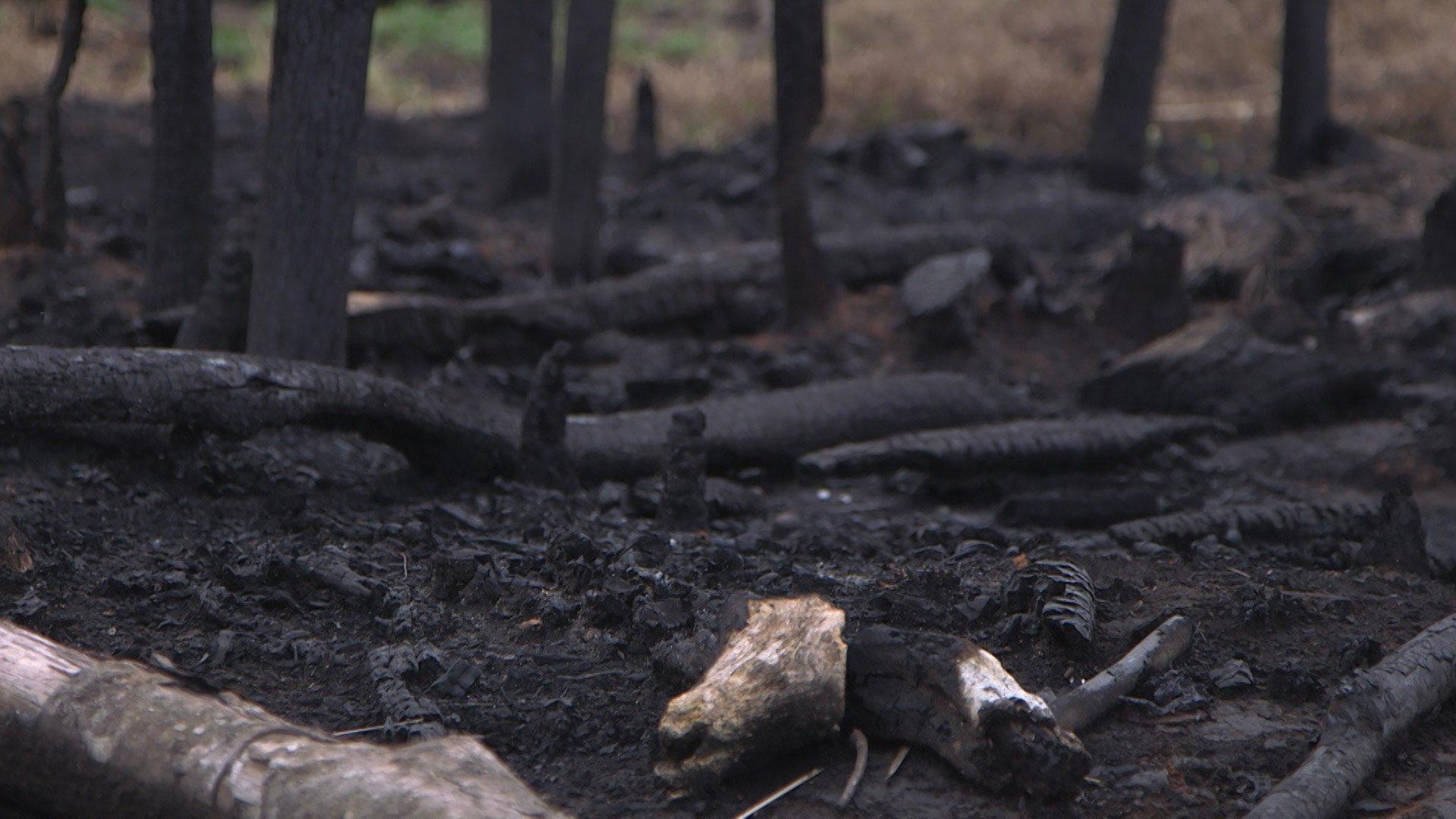
27 March 2024
MRG urges action on Batwa rights in the Democratic Republic of Congo
Marginalized and impoverished, DRC's Batwa suffer human rights abuses perpetrated by park guards and military forces.
-

8 November 2023
Upcoming Trial of Congolese Warlord in France is a Historic Step Toward Justice
On 6 November, three French investigative judges indicted former Congolese warlord Roger Lumbala Tshitenga for his alleged complicity in…
-

1 December 2022
« Protéger » 30% des terres d’ici 2030 : un désastre pour les peuples et une mauvaise idée pour la planète
Click here to read this statement in English. Survival International, Amnesty International, Minority Rights Group International (MRG) et…
Digital reports
-
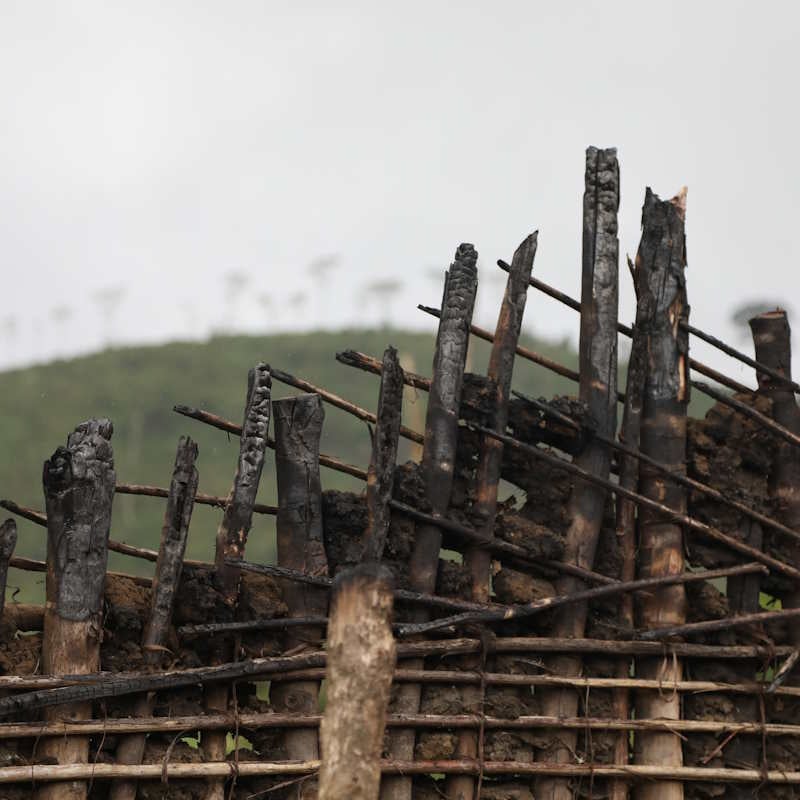
5 April 2022
‘They came to purge the forest by force’
We documented human rights violations committed by park guards against Batwa community members in at least six villages inside the park….
Reports and briefings
View all-
5 May 2022
Fortress Conservation and International Accountability for Human Rights Violations against Batwa in Kahuzi-Biega National Park
The Kahuzi-Biega National Park (‘PNKB’) in the Democratic Republic of the Congo presents an existential threat to the indigenous Batwa…
-
5 April 2022
To Purge the Forest by Force: Organized violence against Batwa in Kahuzi-Biega National Park
The Kahuzi-Biega National Park in the Democratic Republic of the Congo, a protected area and UNESCO World Heritage site that has received…
-
7 May 2010
Uncounted: the hidden lives of Batwa women
Despite being the original inhabitants of the equatorial forests of Africa’s Great Lakes region, Batwa are, in official terms,…
Events
-
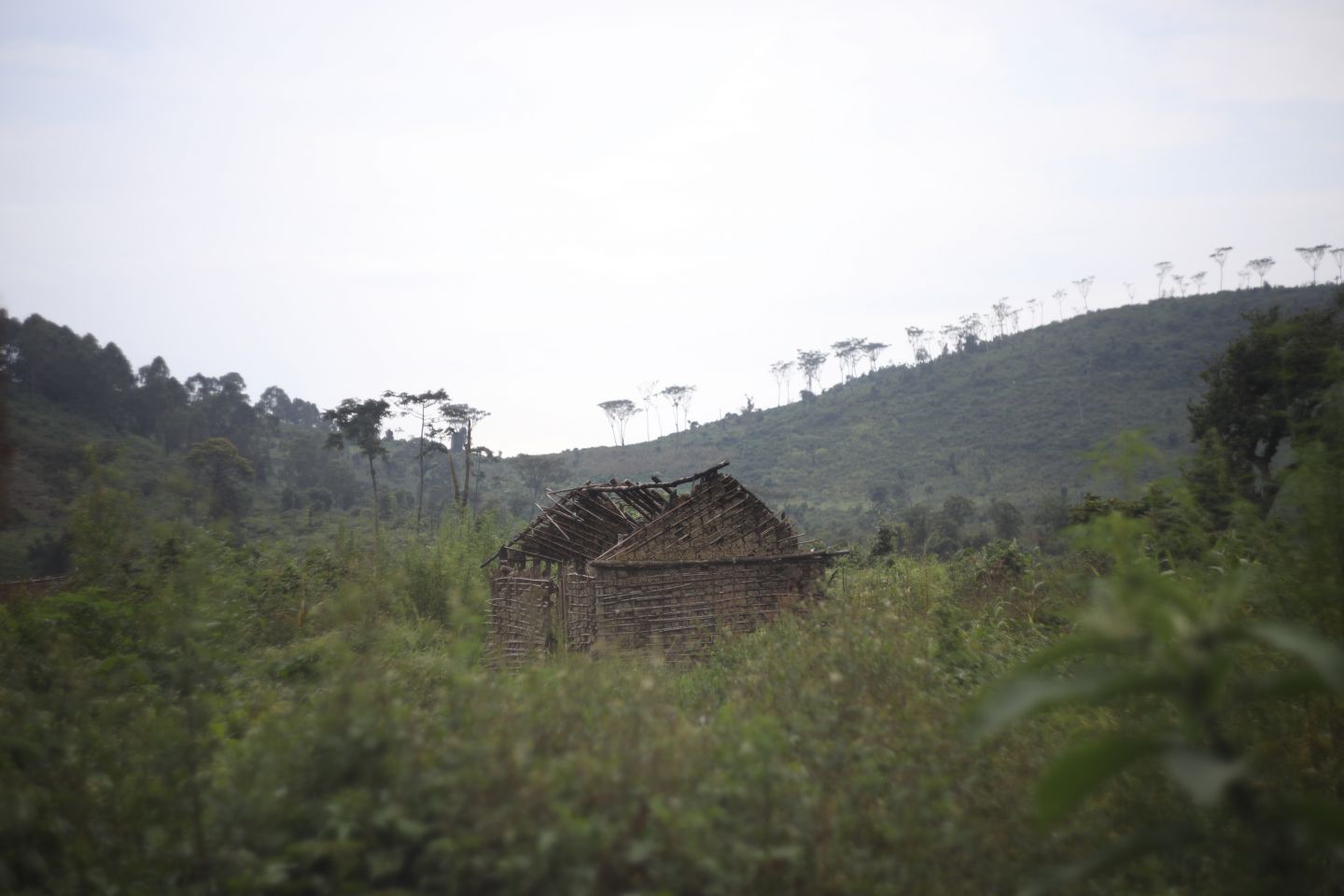
24 May 2022 • 3:30 – 5:00 pm BST
Land Body Ecologies: Understanding the Traumas of Fortress Conservation
Global health research communities and contributions to the improvement of indigenous peoples’ health and wellbeing. The creation of…
Don’t miss out
- Updates to this country profile
- New publications and resources
Receive updates about this country or territory
-
Our strategy
We work with ethnic, religious and linguistic minorities, and indigenous peoples to secure their rights and promote understanding between communities.
-
-


